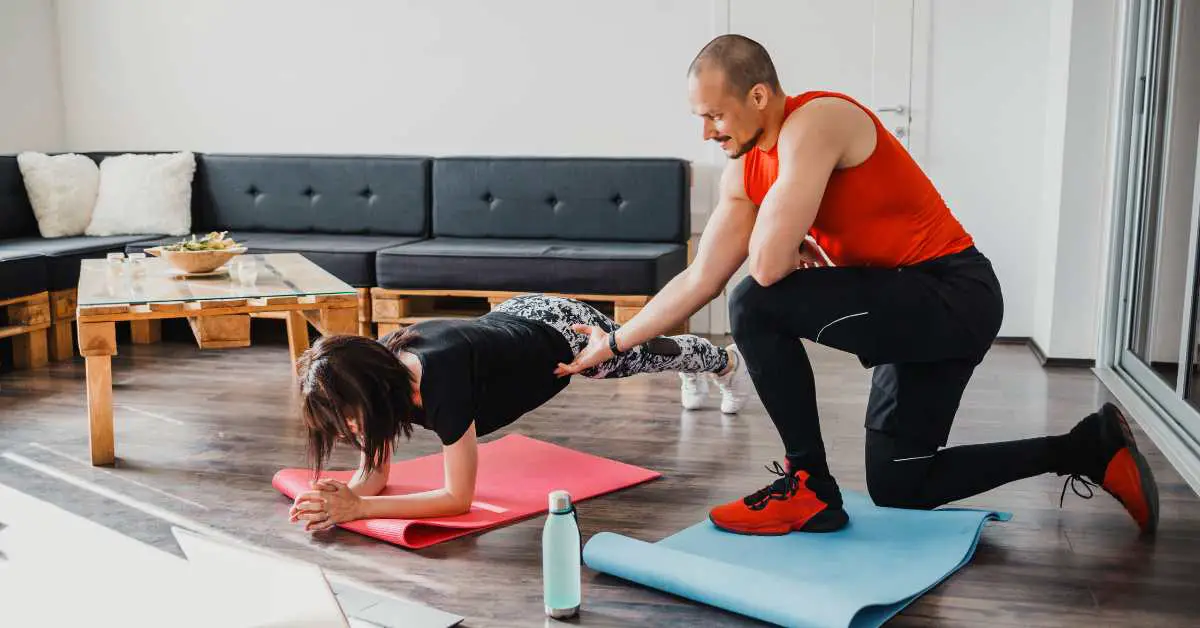If you’re reading this, chances are you’re considering taking your fitness journey to the next level with in-home personal training. You’re in the right place! In this ultimate guide, I’ll be sharing my experience and insights on how a certified personal trainer can be the game-changer you need to achieve your fitness goals.
What is In-Home Personal Training?
In-home personal training is a unique and convenient approach to fitness that allows you to work with a certified personal trainer right in the comfort of your own home. It’s perfect for those with busy schedules, limited access to a gym, or anyone who prefers a more personalized and private workout experience.
Top Reasons to Choose In-Home Personal Training
Convenience and Time-Saving
One of the best aspects of in-home personal training is the convenience factor. You won’t have to worry about driving to the gym, finding parking, or dealing with overcrowded fitness centers. Instead, your personal trainer will come to you, saving you valuable time in your day.
Customized Workouts
With in-home training, they will create a customized workout plan based on your unique fitness goals, needs, and preferences. This level of personalization ensures that each workout session is tailored to your strengths and weaknesses, maximizing your results.
Accountability and Motivation
It’s no secret that staying motivated and accountable is one of the biggest challenges when it comes to fitness. With a personal trainer by your side, you’ll have a fitness expert who is dedicated to keeping you on track and motivated to reach your goals.
Proper Form and Technique
A personal trainer will not only provide you with a customized workout plan but also teach you the proper form and technique for each exercise. This is crucial for preventing injuries ((https://www.ncbi.nlm.nih.gov/pmc/articles/PMC7594759/)) and ensuring that you’re getting the most out of your workouts.
Privacy and Comfort
For some people, working out in a crowded gym can be intimidating or uncomfortable. In-home personal training provides a private and comfortable environment where you can focus on your fitness journey ((https://www.ncbi.nlm.nih.gov/pmc/articles/PMC6533109/)) without any distractions or insecurities.
How to Choose the Right In-Home Personal Trainer
Finding the perfect in-home personal trainer can seem daunting, but with a little bit of research and planning, you can find the right fit for your needs. Here are some essential factors to consider when choosing a trainer:
Certifications and Qualifications
Make sure your trainer has the necessary certifications from reputable organizations, such as the American College of Sports Medicine (ACSM), National Strength and Conditioning Association (NSCA), or the National Academy of Sports Medicine (NASM). It’s also a good idea to inquire about their educational background ((https://www.ncbi.nlm.nih.gov/pmc/articles/PMC5066109/)) in fitness and health.
Experience and Specialization
When selecting a trainer, it’s essential to find someone with experience working with clients who have similar fitness goals or medical conditions as you. Additionally, trainers may specialize in areas like weight loss, strength training, or injury rehabilitation, so be sure to find one that aligns with your objectives.
Testimonials and References
Ask potential trainers for references or testimonials from previous clients to gauge their effectiveness and get a better sense of their training style ((https://www.ncbi.nlm.nih.gov/pmc/articles/PMC9501401/)). You can also search for online reviews or personal training websites to help you make an informed decision.
Personality and Communication
It’s crucial to find a trainer with whom you can establish a good rapport. You’ll be working closely with them, so it’s essential that their personality and communication style mesh well with your own.
Setting Up Your In-Home Workout Space
Before your first in-home personal training session, it’s important to set up a designated workout space in your home. Here are some tips to help you create the ideal environment:
Choose a Suitable Area
Find an area in your home for a personal training studio that has enough space for you to move around comfortably and perform various exercises. Ideally, this space should be free of clutter and distractions, allowing you to focus solely on your workout.
Ensure Proper Flooring
A good workout space should have proper flooring to ensure safety and comfort during your sessions. Consider investing in a high-quality exercise mat or interlocking foam tiles to provide cushioning and support for your joints.
Gather Essential Equipment
Depending on your fitness goals and your trainer’s recommendations, you may need to invest in some basic equipment for your in-home workouts. Examples of versatile and space-saving equipment include resistance bands, dumbbells, kettlebells, and a stability ball.
Lighting and Ventilation
Make sure your workout space has adequate lighting and ventilation. Natural light is ideal, but if that’s not an option, ensure that you have sufficient artificial lighting. Additionally, proper air circulation is important to maintain a comfortable temperature and air quality during your sessions.
Maximizing Your In-Home Personal Training Experience
To get the most out of your in-home personal training sessions, consider the following tips:
Set Clear Goals
Before starting your training journey, it’s crucial to establish clear and realistic fitness goals, such as weight loss, strength training, or perhaps a combination of each. Discuss your objectives with your trainer and work together to create a comprehensive plan to achieve them.
Communicate Openly
Maintain open communication with your trainer, providing them with feedback on your progress, any challenges you’re facing, or adjustments you’d like to make to your program. This will ensure that your training sessions remain effective and enjoyable.
Stay Consistent
Consistency is key to achieving your fitness goals. Work with your trainer to develop a schedule that works for you and stick to it as closely as possible. Remember, progress takes time and dedication.
Embrace a Holistic Approach
In addition to your workouts, focus on other aspects of your lifestyle that impact your fitness journey, such as nutrition, sleep, and stress management. Your trainer can provide guidance and support in these areas to help you achieve optimal results.
Track Your Progress
Regularly track your progress by taking measurements, recording your workouts, or snapping progress photos. This will not only help you stay motivated but also allow you and your trainer to make any necessary adjustments to your program.
Conclusion
In-home personal training can truly transform your fitness journey by providing a convenient, customized, and supportive workout experience. By choosing the right trainer, setting up an ideal workout space, and following the tips in this guide, you’ll be well on your way to achieving your fitness goals and enjoying a healthier, happier life. So, what are you waiting for?
FAQs

Claudia Faucher is a full-time fitness training expert and lifestyle blogger. She is also been a certified Les Mills BodyPump instructor for the past 5 years and a fitness instructor for over 20 years. Claudia is a personal trainer and creates fitness training programs for seniors and people of all ages. She likes to use her skills and experiences to help others on their fitness journeys.
